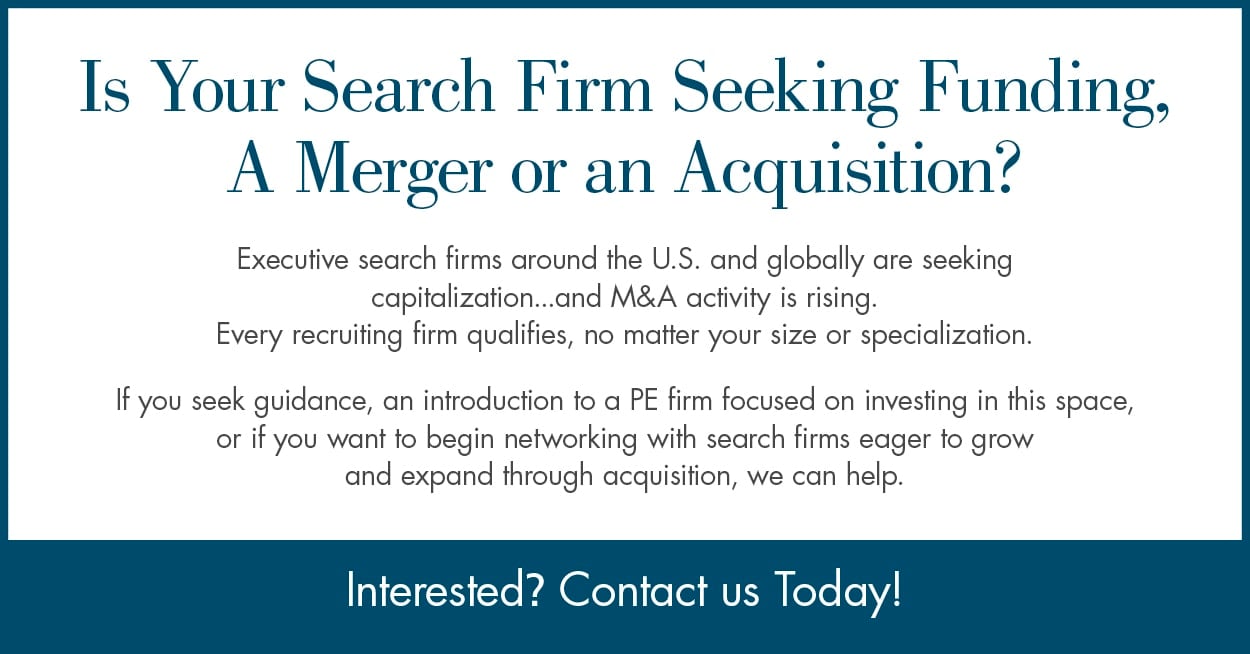4 Steps to Avoid Making a Bad Hire

November 23, 2022 – The clock is ticking the minute the deal closes. How quickly can you execute on the value creation plan and work toward your new private equity backer’s investment thesis? Every portfolio company CEO then must ask the critical related question: Do I have the right team to make that happen? “Data we collect and analyze in our work with private equity-backed software companies shows that virtually every portfolio company requires at least one new or changed member of the C-suite,” says a new report from Bespoke Partners authored by Eric Walczykowski.
For example, recent research by growth advisory firm SBI found that many CEOs lack confidence in their go-to-market team’s abilities to drive growth in the current economic climate. Mr. Walczykowski says this means there is a good chance that CEOs of recently acquired portfolio companies will be looking to bring on new chief revenue officers and chief marketing officers. Therefore, the CEO of the newly minted portfolio company now faces one of the biggest risks they will encounter: making a bad hire.
The Costs of a Bad Hire
“Let’s assume a mis-hired C-level executive will be in the role for at least nine months before the need to make a change is clear,” Mr. Walczykowski said. “During that time, the mis-hired C-suite leader probably has implemented unsuitable strategies or processes. Once it is clear a change is needed, those ineffective strategies or processes need to be undone, which leads to staff confusion and lower morale.”
Mr. Walczykowski also notes that if you tack on the time to hunt for a new executive to replace the departing one, you have lost a year or more of precious execution runway. “That has a massive impact on the investment thesis and the projected hold period for the private equity backers,” he said. “If you hired a CTO to eliminate the company’s technical debt, you are now a full year behind in that critical project. If your CRO implemented the wrong go-to-market process and strategy, then you’ve lost a year of growth. No matter the role, the C-level mis-hire puts the company a year or more behind and the investment thesis in jeopardy.”
Of course, you have also lost several hundred thousand dollars in compensation on the mis-hired executive. “But this is actually a minimal cost when compared to the impact on the business and the value creation plan,” said Mr. Walczykowski. “That can amount to tens of millions of dollars in delayed growth. There’s also a lasting impact on the brand and reputation. An ineffective executive may undercut the quality of customer experience, leading to lost customers and damage to the brand.”
Author Douglas Adams once said, “Nothing travels faster than the speed of light, with the possible exception of bad news.” Negative reviews resulting from a poor customer experience can affect a company’s reputation and ability to attract new customers for years to come.
 Eric Walczykowski is president of Bespoke Partners. He is passionate about building high-performing teams that value doing their best, work together, overcome adversity and learning. He has served as CEO, president, board member, investor, and advisor for technology companies that achieved over $4.5 billion in successful exits. He brings to Bespoke Partners significant professional services experience from Deloitte and Andersen, as well as the high-growth client executive perspective for private equity-backed technology companies.
Eric Walczykowski is president of Bespoke Partners. He is passionate about building high-performing teams that value doing their best, work together, overcome adversity and learning. He has served as CEO, president, board member, investor, and advisor for technology companies that achieved over $4.5 billion in successful exits. He brings to Bespoke Partners significant professional services experience from Deloitte and Andersen, as well as the high-growth client executive perspective for private equity-backed technology companies.
The Society for Human Resource Management reports that the impact on employee morale that stems from a bad executive hire is often considered to be more costly than the financial impact. “If a C-Suite leader is let go, it can cause disillusionment, confusion, panic, pessimism, and loss of motivation among employees,” said Mr. Walczykowski. “That could lead to lower productivity and subpar execution, affecting the bottom line and a portfolio company’s overall value growth trajectory.”
Avoiding Bad Hires
Mr. Walczykowski shares four strategies for mitigating this risk of making a bad hire. These strategies, he says, are based on the processes Bespoke Partners developed over the years that enabled the firm to achieve its 99 percent placement success rate.
1. Analyze Broader Candidate Pools
Indeed, finding an executive who has successfully performed the precise role in a private equity context would be ideal. But competition is stiff for these executives. “By focusing too narrowly on this profile, you might miss a slightly different leader who will be extraordinarily effective in the role,” said Mr. Walczykowski. “That’s why we bring our clients access to the most extensive network of executives with private equity experience, but we also identify executives outside of the space with high potential.”
Bespoke Partners’ aggregated decades of experience in private equity leadership advisory enables the firm to find executives with skills that will translate into private equity, said Mr. Walczykowski. For example, an executive from a successful public company may have a proven ability to deploy the latest cloud or SaaS technologies to bring products to market faster for accelerated value creation.
Related: Retaining Your Employees During the Great Resignation
In addition, Bespoke has become known for its exclusive focus on private equity software executives. “We are continuously in contact with recruitable leaders across the sector and will have insight into availability you cannot get anywhere else,” said Mr. Walczykowski. “The goal is to widen the pool of candidates so you can lessen the effect of the tight talent market and can identify high-impact executives that the traditional approach to recruiting will miss.”
2. Utilize “Advanced Scorecarding”
When scoping the role, it’s important to clearly define the specific skill-sets and experience that will support your value creation plan and capture them in the scorecard, according to Mr. Walczykowski. The approach Bespoke Partners calls advanced scorecarding will base these parameters on the skill-sets necessary to execute a value creation plan to achieve the investment thesis.
 Why We Make Bad Hires
Why We Make Bad Hires
Too often, companies make hiring decisions with too little thought, despite the risks that bad hires can bring. Truth be told, every employee’s contribution matters. In a new report, StevenDouglas offers some key considerations to keep in mind when evaluating the effectiveness of your hiring process.
“Maybe you need a finance executive adept at orchestrating M&A and navigating the complexities of rolling up multiple add-on acquisitions,” Mr. Walczykowski said. “Maybe you want somebody who has mastered go-to-market processes to drive revenue expansion. Or maybe you want a tech revolutionary, the kind who comes in and makes sweeping changes such as tech enablement of key internal processes and service delivery.”
Mr. Walczykowski describes advanced scorecarding as the process of aligning and prioritizing the desired skill-sets and experience around the investment thesis specific to the private equity-backed software company.
3. Employ Backchannel Referencing
Backchannel referencing is the technique of digging deeper into the accomplishments and workstyle of a candidate. Bespoke Partners calls this approach “deep validation,” and the firm uses its network of software industry contacts to learn more about how candidates performed in prior roles.
Did the executive play an essential role in the accomplishments they listed on their resume? How did the executive fit with the company culture and executive team?
“These are the types of questions backchannel referencing can answer, providing a level of insight that standard reference checks will not,” Mr. Walczykowski said.
4. Conduct Behavioral Assessments
The “soft skills” of how a leader operates often are more critical to success than their technical knowledge of the role. A technically adept leader who fails to mesh with the rest of the executive team or who struggles to inspire others will never make the most of those technical skills, according to Mr. Walczykowski. That’s why Bespoke Partners’ FIT Profile process employs Hogan Assessments to uncover how candidates will fit with the company’s culture and the rest of the executive leadership team.
Will a candidate be able to collaborate effectively with the other leaders? Do they have behavioral traits that complement those of their peers? Will the team be cohesive and execute together? Bespoke Partners’ data shows that executives who have been placed with our FIT Profile process are 20 percent more likely to be in the position for at least two years, a key sign of a successful placement and that the FIT Profile works.
Related: Hiring Top Talent in Unprecedented Times
Contributed by Scott A. Scanlon, Editor-in-Chief; Dale M. Zupsansky, Managing Editor; and Stephen Sawicki, Managing Editor – Hunt Scanlon Media












